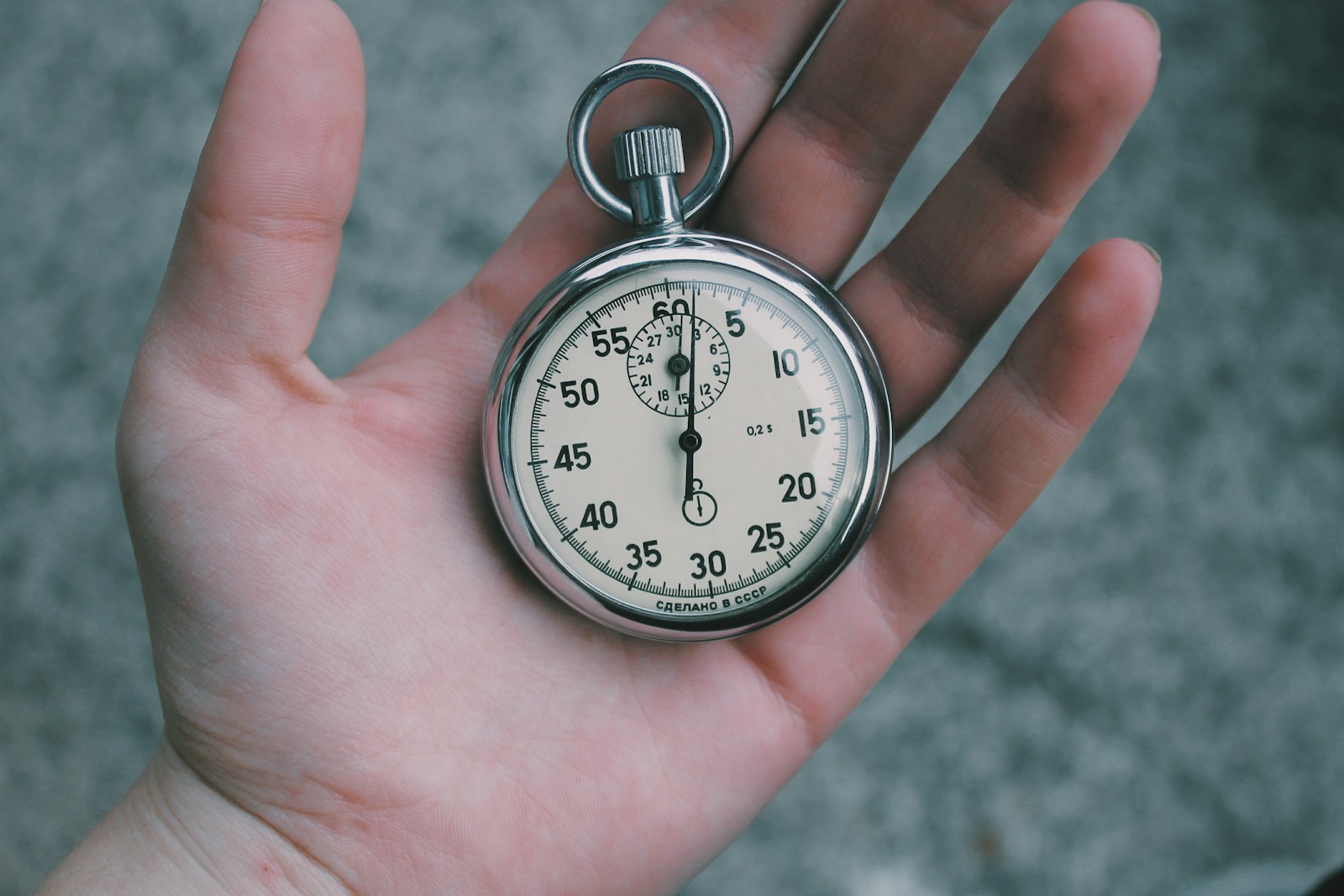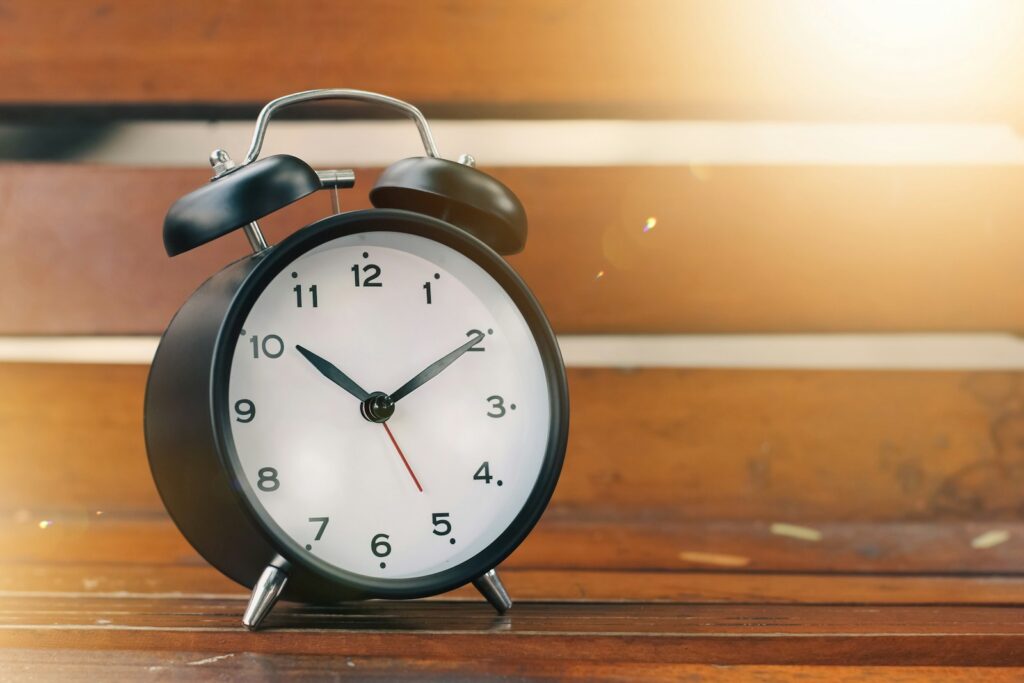Daylight Saving Time 2024: The Background, Health Effects and The Advocacy for Change

The dawn of the 20th century witnessed burgeoning sociotechnological advancements alongside a growing emphasis on maximizing daylight hours. This confluence of progress and pragmatism gave rise to daylight saving time (DST). In 1908, Port Arthur, Ontario, Canada, became the unlikely birthplace of this novel concept.
The Origins of Daylight Saving Time
A small group spearheaded the initial implementation, aiming to better align daily activities with the available sunlight. This localized experiment foreshadowed a global shift in timekeeping practices, although widespread adoption would take several more decades.
The outbreak of World War I dramatically accelerated DST’s trajectory. Facing pressure to optimize resource allocation for war efforts, Germany adopted DST in 1916. The primary objective was to conserve energy, particularly fuel for lighting and industrial production.
DST and War-Time Adoption
This strategic wartime measure quickly spread across Europe, with the United Kingdom and France rapidly following suit. The exigencies of war underscored the potential of DST to minimize artificial lighting needs, thus freeing up critical resources for the war machine. The wartime adoption of DST established a precedent, laying the groundwork for its later resurgence in peacetime.
“Time is what we want most, but what we use worst.” — William Penn

The intellectual foundations of DST can be attributed to figures like George Vernon Hudson and William Willett. Hudson, a New Zealand entomologist, proposed shifting clocks to capitalize on daylight hours for his personal entomological pursuits.
Key Proponents and Early Advocacy
Independently, British builder William Willett advocated for a systematic clock shift to extend daylight into the evening hours, a concept initially met with resistance. These early proponents, though driven by different motivations, highlighted a growing recognition of the potential societal benefits of manipulating clock time. Their ideas, while not immediately embraced, planted the seeds for future legislative efforts.
Following World War I, a return to standard time became the norm in many regions. However, the concept of DST persisted in public discourse, its adoption and rejection reflecting a complex interplay of economic and environmental factors.
Post-War Adoption and Public Discourse
The renewed pressures of World War II resurrected DST as a valuable tool for energy conservation. Across Europe and North America, DST became a recurring strategy for resource management during times of crisis, solidifying its perceived utility. This repeated adoption demonstrated DST’s adaptability to changing societal demands and its potential role in navigating both wartime exigencies and peacetime economic complexities.
The core rationale for DST centered on anticipated energy savings and the perceived socio-economic advantages of extended daylight hours in the evening. Synchronizing human activity with natural light cycles promised benefits for industries dependent on outdoor conditions, like agriculture and construction. These perceived advantages influenced legislative decisions across diverse regions.
While the precise impact of DST varied based on geographical location, economic structure, and seasonal light variations, the overarching goal remained consistent: to optimize the alignment of human schedules with daylight availability. This highlighted the intricate and evolving relationship between regulated time and the natural environment.
The Case for Permanent DST
This ongoing dialogue around the optimal balance between natural rhythms and human activity would eventually lead to the contemporary debates surrounding the permanent adoption of DST versus a return to standard time. From its wartime origins as a resource-saving measure, Daylight Saving Time (DST) has evolved into a complex socio-political issue.
The ongoing debate about its efficacy highlights the intricate interplay between perceived economic benefits, public health concerns, and the very structure of our temporal frameworks. This leads naturally to the question of whether societies should adopt DST permanently, revert to standard time year-round, or continue the current practice of biannual clock changes. This debate is far from settled, sparking discussions at local, national, and international levels.
Health Concerns and Circadian Rhythm Disruption
The core arguments for permanent DST often center on economic advantages. Retailers and the leisure industry anticipate increased consumer spending with extended daylight hours, potentially stimulating local economies. Advocates also point to possible energy reductions, although these claims are contested and depend on various regional and sectoral factors. Reduced reliance on artificial lighting during evening hours is a key component of this argument.
Conversely, permanent standard time proponents emphasize the alignment with natural circadian rhythms. They cite health concerns associated with DST transitions, including increased risks of cardiovascular incidents, mood disorders, and impaired cognitive function. Sleep experts frequently highlight the negative impacts of disrupted sleep patterns on overall health and productivity. Concerns about children’s safety commuting to school in darkness during winter months under permanent DST also fuel this side of the debate.
Public opinion is divided. Many express frustration with the biannual clock changes, but preferences for permanent DST or standard time vary considerably. Individual experiences, regional climates, and work schedules all shape public sentiment. Areas experiencing significant seasonal daylight shifts add another layer of complexity.
Public Opinion and Legislative Efforts
This debate is actively playing out in legislatures across the United States. The Sunshine Protection Act, a bill to establish permanent DST nationwide, has reignited the discussion. Several states have already passed legislation for permanent DST, contingent on federal approval or coordinated action with neighboring states. Florida’s enacted legislation, awaiting federal authorization, exemplifies this trend. Other states, like Michigan, are actively exploring similar measures. The Uniform Time Act, the current federal law governing time zones, presents a significant hurdle for states seeking to deviate.
Globally, approaches to DST are diverse. Japan and India do not observe DST at all. Russia has switched back and forth, reflecting fluctuating legislative priorities and public opinion. The European Union, after extensive public consultations revealing widespread dissatisfaction with clock changes, has also debated ending the practice.
These legislative actions and ongoing public discussions highlight the challenges of balancing time policy with socio-economic factors and public health. The choice between permanent DST and standard time ultimately involves how societies choose to organize time itself, balancing scientific evidence with societal preferences to shape policies with profound impacts on daily life. This naturally leads into a deeper exploration of the health implications associated with these temporal shifts. Beyond the economic and legislative debates surrounding daylight saving time (DST), significant health implications underscore the need for careful consideration. The core issue revolves around the disruption of the human circadian rhythm, the internal biological clock regulating the sleep-wake cycle. Even slight alterations to this delicate system can trigger a cascade of physiological and psychological consequences, impacting both individual and public health.

Shifting clocks forward or backward by an hour, a seemingly small adjustment, can notably impair sleep quality and duration. This disruption manifests in difficulty falling asleep, fragmented sleep throughout the night, and reduced overall sleep efficiency, a phenomenon often referred to as “social jetlag.” This mismatch between our internal biological clock and societal time leads to sleep deprivation, a condition linked to a wide range of health problems. Studies have shown a statistically significant increase in cardiovascular events, such as heart attacks and strokes, in the days immediately following clock changes. This underscores the added strain placed on the cardiovascular system by the abrupt shift in sleep patterns.
The societal impact of this sleep disruption is readily apparent. Increased drowsy driving incidents contribute to a rise in motor vehicle accidents following time changes. This highlights the crucial role of adequate sleep in maintaining alertness and reaction time, vital for public safety. Workplace productivity also suffers, as cognitive function and performance decline due to poor sleep, potentially affecting economic output.

Mental health is also vulnerable to these time shifts. An increased risk of mood disorders, including depression and anxiety, has been associated with DST transitions. The link between sleep quality and mental well-being is well-established, and disruptions to sleep patterns can exacerbate existing mental health issues and diminish overall quality of life. This reinforces the need to critically evaluate the practice of biannual clock changes.
These health concerns extend beyond individual coping mechanisms. The recurring nature of these time changes necessitates a broader societal discussion regarding the efficacy and relevance of DST in the modern era. Technological advancements and evolving energy consumption patterns have diminished the significance of DST’s original rationale, energy conservation.
Public awareness campaigns emphasizing the importance of sleep hygiene become increasingly critical, especially around the time of clock changes. Gradual adjustments to sleep and wake times can help mitigate the immediate impact of the time shift. Creating a conducive sleep environment, minimizing light and noise, is essential for promoting restful sleep. Policymakers must explore strategies to minimize these health impacts, whether through legislative action or targeted public health initiatives designed to bolster community-wide resilience. This transition to proactive health management is key. Practical steps and informed policy decisions are essential to navigating the health challenges posed by DST.
The biannual shift to and from Daylight Saving Time (DST) presents a recurring challenge to human health, extending beyond mere inconvenience. At the heart of this issue lies the disruption of our circadian rhythm, the internal biological clock governing the sleep-wake cycle. This intricate system, synchronized with environmental cues like light and darkness, regulates a wide range of physiological processes, from hormone release to body temperature. Even minor disruptions to this delicate balance can trigger a cascade of negative health consequences.
One of the most immediate and widely felt effects of time changes is sleep disruption. Shifting the clock forward in spring, often referred to as “springing forward,” effectively shortens the sleep period, leading to a form of “social jetlag.” This misalignment between our internal clock and societal time results in difficulty falling asleep, fragmented sleep, and reduced overall sleep duration. The cumulative effect is sleep deprivation, a condition linked to a plethora of health problems. Conversely, the “fall back” transition in autumn, while seemingly offering an extra hour of sleep, can still disrupt sleep patterns as the body readjusts to the new schedule.
The consequences of this sleep disruption are significant and multifaceted. Research has consistently shown a correlation between time changes and an increased risk of cardiovascular events, including heart attacks and strokes. The abrupt shift in sleep patterns places added stress on the cardiovascular system, potentially exacerbating existing conditions. Moreover, impaired sleep can compromise immune function, making individuals more susceptible to infections and illnesses.

Beyond individual health, the impacts of time changes ripple through society. Drowsy driving, a direct consequence of sleep deprivation, contributes to a spike in traffic accidents in the days following clock shifts. This poses a serious public safety concern, highlighting the crucial role of adequate sleep in maintaining alertness and reaction time. Workplace productivity also suffers as cognitive function and performance decline due to poor sleep, impacting economic output. Furthermore, mental health is affected, with studies showing an increased risk of mood disorders, such as depression and anxiety, associated with DST transitions. The disruption of sleep patterns can exacerbate pre-existing mental health conditions and diminish overall well-being.
Addressing the health challenges posed by time changes requires a multi-pronged approach. Public awareness campaigns emphasizing the importance of sleep hygiene are crucial, particularly around the time of clock shifts. Practical strategies, such as gradually adjusting sleep and wake times in the days leading up to the change, can help mitigate the immediate impact. Creating a conducive sleep environment by minimizing light and noise exposure is essential for promoting restful sleep.
Furthermore, policymakers must engage in ongoing discussions about the efficacy and relevance of DST in the modern era, weighing the purported benefits against the documented health risks. A critical evaluation of current policies, informed by scientific evidence and public health considerations, is necessary to determine the most appropriate course of action.
Ultimately, prioritizing public health and well-being requires a thoughtful and comprehensive approach to time management in our increasingly complex world. Beyond the broader public health implications discussed, managing the transition to and from DST requires proactive individual strategies. Our circadian rhythms, the internal biological clocks governing sleep-wake cycles, are significantly impacted by these time shifts. Recognizing this impact allows for the development of personalized coping mechanisms to mitigate the negative effects and facilitate smoother transitions.
Gradual adjustments to sleep schedules are key. Begin shifting sleep and wake times by 15-30 minutes several days before the official time change. This incremental approach allows the body to acclimate more naturally, minimizing the jarring effects of a sudden shift. Light exposure plays a crucial role. Increase exposure to natural light, particularly in the morning. This reinforces the body’s association of daylight with wakefulness and activity. Conversely, minimize light exposure in the evening, creating a conducive environment for sleep. If access to natural light is limited, consider using a light therapy box, especially during the transition to standard time.
TheMaintaining a consistent sleep schedule, even on weekends, strengthens the body’s natural sleep-wake cycle. This regularity promotes better sleep quality and overall health. Limit consumption of caffeine and alcohol close to bedtime, as these substances can interfere with sleep patterns. Develop a relaxing pre-sleep routine.
Activities such as reading concept of aligning human activity with daylight hours is ancient. Early civilizations, including the Romans, adjusted their daily schedules to the sun’s rhythms, evidenced by adaptable timekeeping practices like water clocks. These adjustments, however, lacked the systematic clock manipulation that characterizes modern daylight saving time. Benjamin Franklin’s , taking a warm bath, or practicing mindfulness techniques can signal to the body that it’s time to wind down.
Regular physical activity supports both physical and mental well-being, contributing to improved sleep quality. Exercise helps regulate energy levels and promotes the body’s natural restorative processes. However, avoid intense1784 suggestion that Parisians rise earlier in summer to economize on candles offered a nascent, albeit pre-clock-shifting, approach to maximizing daylight workouts close to bedtime, as this can interfere with sleep.
By implementing these strategies, individuals can proactively manage the challenges posed by time changes, mitigating disruptions to their circadian rhythms and promoting overall health. These individual adaptations are further influenced by the sociological and legislative context of DST, which varies significantly across the globe.

This early proposition, though not truly daylight saving time, foreshadowed later developments.
George Hudson, a New Zealand entomologist, formalized the concept in 1895, proposing a two-hour clock shift in spring toThe diverse international approaches to DST further highlight the complex interplay between individual adaptation and broader societal frameworks. While provide more daylight for insect collecting after work. This personal pursuit inadvertently sparked a global movement. Port Arthur, Ontario, became the first to implement DST in 1908, a local initiative preceding wider adoption.
World War I spurred its personal strategies can mitigate the impact of time changes, the global landscape of Daylight Saving## Historical Context and Purpose of Daylight Saving Time The concept of aligning human activity with daylight hours is ancient. Early civilizations, including the Romans, adjusted their daily schedules to the sun’s rhythms, evidenced by adaptable timekeeping practices like water clocks.
These adjustments, however, lacked the systematic clock manipulation that characterizes modern daylight saving time. Benjamin Franklin‘s 1784 suggestion that Parisians rise earlier in summer to economize on candles offered a nascent, albeit pre-clock-shifting, approach to maximizing daylight. This early proposition, though not truly daylight saving time, foreshadowed later developments.
George Hudson, a New Zealand entomologist, formalized the concept in 1895, proposing a two-hour clock shift in spring to provide more daylight for insect collecting after work. This personal pursuit inadvertently sparked a global movement. Port Arthur, Ontario, became the first to implement DST in 1908, a local initiative preceding wider adoption.
World War I spurred its broader implementation, with the German and Austro-Hungarian empires adopting DST in 1916 to conserve energy crucial for wartime efforts. This marked a turning point, associating DST with national resource management.
Energy conservation became the cornerstone rationale for DST. Shifting clocks forward theoretically reduced artificial lighting and heating needs, translating into significant fuel savings. The expanding industrialization and standardization of work schedules further cemented DST’s perceived economic benefits. Increased daylight hours were linked to enhanced productivity in both social and professional spheres. The promise of extended daylight leisure time also contributed to DST’s growing appeal, envisioned as improving quality of life and bolstering commercial activity.
The effectiveness of DST in achieving its primary objective, energy conservation, is a persistent source of contention. Research offers conflicting conclusions. Some studies suggest negligible energy savings in contemporary society. Household energy consumption patterns have evolved.
Heating and cooling systems, largely independent of daylight hours, now dominate energy use, diminishing the impact of lighting-related savings previously associated with DST. This shift has prompted a reevaluation of DST’s purpose, focusing on non-energy related advantages like extended evening daylight for retail and recreation.
Global DST implementation is far from uniform. Equatorial nations, experiencing minimal daylight variation, generally find DST unnecessary. The energy crises of the 1970s, however, prompted some regions to adopt or extend DST as an emergency measure, showcasing its adaptability as a policy tool. This historical context underscores the ongoing tension between DST’s initial rationale and its evolving role in a changing world.
This very evolution of DST’s perceived benefits and drawbacks has propelled it into ongoing debates, setting the stage for current discussions surrounding its permanent adoption or abandonment. The question of whether to maintain, modify, or eliminate DST continues to be a complex calculation balancing historical precedent with contemporary needs and concerns.
Debating Permanent DST vs. Standard Time
From its initial aims of energy conservation and aligning human activity with daylight hours, daylight saving time (DST) has evolved into a complex subject of ongoing debate. This debate now centers on whether to maintain the current biannual time shifts, adopt permanent DST, or revert to year-round standard time. The implications of this decision extend beyond mere convenience, touching upon economic productivity, social rhythms, and even public health.
This contemporary discussion has gained considerable traction in the United States. Over 700 legislative bills related to DST have been introduced in various state legislatures. These bills reflect a spectrum of approaches, from establishing permanent DST to eliminating time changes altogether. States like Florida and California have been particularly vocal in advocating for permanent DST, even seeking federal approval to enact such a change.
However, their efforts are constrained by the Uniform Time Act of 1966, which mandates federal oversight of time changes. At the national level, the Sunshine Protection Act, proposing permanent DST nationwide, has become a key piece of legislation. Proponents highlight potential economic benefits, such as increased consumer spending due to extended daylight hours, benefiting retail and tourism sectors.
Enhanced productivity resulting from a consistent, year-round time system is another frequently cited advantage. Despite this legislative activity, no definitive federal action has been taken, leaving the 2024 time policy unchanged.
Public opinion on the matter remains divided. While many express frustration with the biannual clock adjustments, there is no clear consensus on the preferred alternative. Some appreciate the extra daylight hours afforded by DST for leisure and work activities.
Others prioritize the health benefits associated with standard time, aligning more closely with natural circadian rhythms, potentially improving sleep quality and overall well-being. Safety concerns, particularly regarding darker mornings for schoolchildren and commuters, are also prominent in the discussion. The United States is not alone in grappling with these time-related policy decisions.
The European Union recently voted to discontinue the biannual clock changes, requiring each member state to choose either permanent DST or standard time. This decision reflects varying national preferences and logistical considerations across the continent.
Expert opinions further complicate the discussion. Sleep scientists often advocate for permanent standard time, citing its alignment with human biology. Other experts, including some sociologists and economists, emphasize the perceived economic and social benefits of DST. Ultimately, the debate involves balancing historical perspectives with contemporary needs.
Legislative bodies worldwide continue to evaluate the evidence and public sentiment, aiming to create time policies that best serve their constituents. The ongoing discussion highlights the intricate relationship between time, society, and individual well-being.
These deliberations ultimately shape our daily rhythms and have significant implications for how we live, work, and interact with the world around us. This naturally leads to considering the potential health consequences of these choices.
Health Implications of Time Changes
Beyond the economic and social considerations, the debate surrounding permanent Daylight Saving Time versus standard time has significant public health implications. The biannual clock change inherent in DST disrupts the human body’s natural circadian rhythm, the internal clock governing sleep-wake cycles.
This disruption affects sleep patterns, leading to insufficient sleep for many, particularly those with rigid work or school schedules. Difficulties adjusting to the time change manifest as delayed sleep onset, shorter sleep duration, and overall poorer sleep quality, placing considerable strain on the body and mind.
This sleep disruption is not merely an inconvenience; research reveals a strong correlation between the sleep disturbances caused by DST transitions and various adverse health outcomes. The “spring forward” transition, which results in the loss of an hour of sleep, is associated with a statistically significant increase in heart attacks and strokes immediately following the time change.
This spike in cardiovascular events underscores the physiological stress placed on the body by abruptly disrupted sleep. Consistent, quality sleep is crucial for cardiovascular health, and sleep deprivation can exacerbate existing conditions, making individuals more vulnerable to serious health complications.
Mental health is similarly impacted. The sleep disruptions caused by DST transitions can worsen mood disorders. Sleep deprivation impairs emotional regulation, contributing to increased irritability, anxiety, and symptoms of depression.
Individuals already managing mental health conditions often find these periods especially challenging, highlighting the crucial role of regular, adequate sleep in mental well-being. The destabilizing effects of DST transitions on sleep can undermine the efficacy of treatment and support systems for these individuals.
Public safety is another area of concern. Drowsy driving incidents increase following DST transitions. Sleep-deprived drivers experience reduced alertness, impaired attention, and slower reaction times, increasing the risk of accidents.
This poses a significant public health risk, endangering not only drivers but also pedestrians and other road users. Public awareness campaigns and increased vigilance are necessary to mitigate these risks during the transition periods.

These health repercussions warrant a thorough reevaluation of the DST mandate. Policy discussions must weigh the perceived benefits of DST against the documented health risks. Adopting a permanent, fixed time system, whether standard time or DST, could potentially minimize these risks by aligning our schedules more closely with our natural biological rhythms, contributing to improved public health and well-being.
The ongoing dialogue about time policy must incorporate these health considerations to ensure that public health outcomes are prioritized in any legislative decisions. This naturally leads to a discussion of strategies for mitigating the negative impacts of time changes, regardless of the chosen policy.
Managing the Transition: Tips and Strategies
Beyond the well-documented health impacts of daylight saving time transitions, proactive strategies exist to mitigate these effects and ease the adjustment process. These strategies acknowledge the close relationship between our internal biological clocks and the external environment, particularly light and daily routines. Addressing these factors can significantly influence how our bodies navigate these temporal shifts.
One key strategy involves a gradual adjustment of sleep schedules. In the days leading up to the time change, shifting bedtime by 15-30 minutes each day can lessen the abruptness of the one-hour shift. This incremental approach allows the body to acclimatize more smoothly, reducing the shock to the circadian rhythm. This is especially important during the “spring forward” transition, which often leads to sleep deprivation.
Light exposure plays a crucial role in regulating our circadian rhythms. Increasing exposure to natural daylight, particularly in the morning, can help synchronize our internal clocks with the new time. Morning light suppresses melatonin production, promoting wakefulness and aligning the body with the shifted daylight hours. This can be particularly helpful in combating the grogginess often experienced after the spring transition.
Maintaining a regular sleep schedule, even beyond the immediate transition period, reinforces the body’s adaptation. A consistent sleep-wake cycle supports a healthy circadian rhythm. Relaxation techniques before bed, such as reading or meditation, can further enhance sleep quality. Creating a conducive sleep environment—dark, quiet, and cool—is also essential.
Dietary choices and lifestyle habits also contribute to a smoother transition. Limiting caffeine and alcohol intake, especially in the evening, can improve sleep quality. These substances can disrupt sleep patterns, making it harder to fall asleep and stay asleep. Regular exercise can also promote better sleep, making the body more resilient to changes in routine.
These adjustments extend beyond individual actions and reflect broader global considerations regarding time management. Different cultures and regions approach daylight saving time in diverse ways, highlighting the complex interplay of social, economic, and environmental factors that influence time policies worldwide. Examining these international perspectives provides valuable insights into how societies adapt to and manage time.
International Perspectives on Daylight Saving Time
While personal adjustments are key to navigating daylight saving time transitions, a broader understanding emerges from examining international approaches. The global landscape of daylight saving time is far from uniform, reflecting diverse cultural, economic, and geographical influences. This variation underscores how time, seemingly a universal constant, is subject to social and political interpretation.
North America exemplifies this complexity. The United States and Canada, largely observing daylight saving time, find its historical justifications of energy conservation increasingly challenged by modern energy consumption patterns. Debates surrounding its efficacy and societal impact are ongoing, fueled by evolving public sentiment and technological advancements.
This internal discourse contrasts with the European Union’s experience. A continent-wide review of daylight saving time, spurred by diverging public opinion, led to a proposal for its abolishment, leaving individual member states to determine their preferred year-round time.
Northern European nations, experiencing minimal benefit from extended daylight hours, generally favor abolishment. Southern European countries, like Spain, where extended daylight boosts tourism, often prefer maintaining the practice.

Asia presents a different perspective. Many Asian countries, including economic powerhouses like Japan and China, have never adopted daylight saving time. The minimal seasonal variation in daylight hours in these regions renders it less practical. Australia showcases internal divisions, with states like New South Wales and Victoria observing daylight saving time, while Queensland consistently rejects it due to climatic and agricultural concerns. This intra-national variation highlights the localized impact of time policies.
Africa’s adoption of daylight saving time is infrequent, reflecting diverse socio-environmental factors. While some countries, such as Egypt, have experimented with it, policy reversals due to public resistance and administrative challenges are common.
The Middle East adds another layer of complexity. Countries like Iran and Israel intertwine daylight saving time with religious calendars and cultural observances, demonstrating the integration of timekeeping with deeply held beliefs.
Ultimately, the global tapestry of daylight saving time reveals a dynamic interplay between tradition, pragmatism, and evolving societal needs. Advancing technologies, cultural norms, and economic considerations shape each nation’s approach.
Examining these international perspectives provides valuable context for understanding the ongoing discussions and potential future of daylight saving time policies worldwide. This exploration naturally leads to further questions about the specifics of daylight saving time in the current year and beyond.
Frequently Asked Questions about DST in 2024
The varied international approaches to daylight saving time (DST) highlight the interplay of cultural norms and practical considerations. Shifting focus to the United States, DST in 2024 follows a familiar pattern. On Sunday, March 10th, at 2:00 a.m., clocks spring forward one hour, ushering in longer daylight evenings. This “Spring Forward” shift, designed to capitalize on extended daylight hours during spring and summer, echoes the historical drive for energy conservation.
Conversely, on Sunday, November 3rd, at 2:00 a.m., clocks fall back one hour, marking the end of DST. This “Fall Back” transition gifts an extra hour of sleep to those observing the change. This shift back to standard time aligns more closely with the shorter daylight periods of autumn and winter. During the “Spring Forward” change, we effectively lose an hour, while “Fall Back” grants us an additional hour.
Daylight saving time seeks to harmonize human activity with daylight availability, affecting schedules both individually and collectively. The second Sunday in March and the first Sunday in November serve as the established markers for these biannual transitions.
The majority of U.S. states adhere to this schedule. However, Arizona (excluding the Navajo Nation) and Hawaii maintain standard time year-round. Their unique geographical locations and cultural practices render DST less beneficial or even disruptive.
Understanding these time adjustments facilitates adaptation to seasonal shifts within a complex landscape of global timekeeping practices. These practices are shaped by sociocultural factors and legislative frameworks.
Stay updated with Info Feeders for everything you need to know about Daylight Saving Time 2024 and more!










It’s awesome in favor of me to have a web site, which is helpful designed for
my knowledge. thanks admin
Every weekend i used to pay a quick visit this web site,
as i wish for enjoyment, as this this website conations in fact fastidious
funny data too.
naturally like your web site but you have to test the spelling on several of your posts. A number of them are rife with spelling problems and I to find it very troublesome to tell the truth nevertheless I?¦ll surely come again again.
Thiss information is invaluable. How can I find ouut more? http://Boyarka-inform.com/
https://vc.ru/
либет казино
нью ретро казино, голд казино, либет казино
innabet promo code The greatest advantage is that you can utilize an InnaBet promo code to maximize your experience on the platform
Только 2 знакам Зодиака невероятно повезет во второй половине апреля
https://x.com/Fariz418740/status/1911625378860278161
Beer Basha: пиво, вкус и отдых на Каспии в Sea Brezze
https://sealife.az/sea-breeze/restaurants_and_bars/beer-basha-pivo-vkus-i-otdyh-na-kaspii-v-sea-brezze/
Скретч-карты и предки: как лотереи захватили молодежь Китая
https://x.com/kiselev_igr/status/1911668859800560076
“Dolu”da h?rbcil?r dedil?r ki… | Elxan C?f?rov kinolar?m?z?n ugursuzlugundan dan?sd? – QAPQARA
https://www.youtube.com/watch?v=pAeu_YZs-7I
“Ucan taksi” surucusu tovb? etdi | Baku TV-y? hadis? an?n? dan?sd? – ARZUNUN VAXTI
https://www.youtube.com/watch?v=d1VeGY0sw9Q
“Японская Ванга” предсказала крупную катастрофу через три месяца
https://x.com/Fariz418740/status/1912152170230603979
Раскрыты шокирующие подробности гибели самой желанной женщины XX века
https://x.com/kiselev_igr/status/1912395338134020172
Раскрыто неожиданное воздействие жары на организм
https://x.com/kiselev_igr/status/1912450547405250622
Последствия сильного ливня: эвакуированы 31 человек, включая 10 детей
https://x.com/kiselev_igr/status/1912488013038248258
elonbet
Названы 2 знака зодиака, которые притягивают деньги для всех
https://x.com/kiselev_igr/status/1912761312003637382
Самые сексуально совместимые знаки зодиака
https://x.com/SvetlnaKr2/status/1912772846427701425
19-летний тиктокер обручился с 76-летней миллиардершей: «Это была любовь с первого взгляда»
https://x.com/SvetlnaKr2/status/1912781403533570376
Какие знаки зодиака чаще попадают в аварии: данные страховых компаний
https://x.com/kiselev_igr/status/1912791299700256974
5 утренних привычек богатых людей, о которых молчат интервью
https://x.com/IrinaPavlovna84/status/1912948849158840804
Что едят богатые на завтрак: от авокадо до шампанского
https://x.com/IrinaPavlovna84/status/1912974156561346968
2 знака зодиака, которые поглощают всю темную энергию
https://x.com/kiselev_igr/status/1913193565213126938
Названы витамины, дефицит которых провоцирует депрессию и панические атаки
https://x.com/SvetlnaKr2/status/1913210679382724901
Неожиданное открытие: растворимый кофе может быть так же полезен, как и натуральный
https://x.com/SvetlnaKr2/status/1913245545206022281
Майкл Дуглас и Кэтрин Зета-Джонс разводятся после 25 лет брака
https://x.com/Fariz418740/status/1913473214602166643
Как набрать вес без жира — советы диетолог
https://x.com/DeyanetKrmv/status/1913487846129758689
7 продуктов, которые могут заменить зубную щётку — советует стоматолог
https://x.com/NargisEhme94100/status/1913495035728822630
https://x.com/DeyanetKrmv/status/1913622990169706528
Prada bag replica
Sea Breeze: Аквапарк и отдых у моря
https://x.com/Fariz418740/status/1913838453889835329
DIOR bag replica
Почему распалась легендарная пара: В чём настоящая причина развода Майкла Дугласа и Кэтрин Зета-Джонс?
?? Майкл Дуглас и Кэтрин Зета-Джонс разводятся после 25 лет: названа причина https://x.com/NargisEhme94100/status/1914005617326370900
?? Овны разбогатеют, Раки отступят, Рыбы помогут: недельный гороскоп с 21 по 27 апреля
https://x.com/SebiBilalova/status/1914031445724582045
Масла против аппетита: как аромат мяты и цитрусов спасают фигуру без диет
https://x.com/DeyanetKrmv/status/1914035562123587745
Gucci bag replica
Li Auto открыл первый городской шоурум в Азербайджане и стала известна дата открытия основного центра!
https://x.com/SvetlnaKr2/status/1914214791301726269
В России произошло сильное землетрясение, началось извержение вулкана https://x.com/SvetlnaKr2/status/1914222755991454029
Celine fake designer bags
Врач указала на простой способ выявить риск ранней смерти за 30 секунд
https://x.com/SvetlnaKr2/status/1914246396313473116
What symptom indicates that you can no longer eat sweets?
https://x.com/SvetlnaKr2/status/1914255410711728435
Fendi replica designer bags
Растительное масло оказалось связано с одним видом агрессивного рака https://x.com/SvetlnaKr2/status/1914281699267035383
Стала известна возможная причина смерти Папы Франциска https://x.com/SvetlnaKr2/status/1914286810018045990
fake Fendi bag
Ученые выяснили скрытую причину ожирения https://x.com/SvetlnaKr2/status/1914327415247040761
Bottega Veneta replica designer bags
Why did the legendary couple break up: What is the real reason for Michael Douglas and Catherine Zeta-Jones’ divorce?
https://x.com/Fariz418740/status/1914362994722550123
fake Chanel bag
Why did the legendary couple break up: What is the real reason for Michael Douglas and Catherine Zeta-Jones’ divorce?
https://x.com/Fariz418740/status/1914362994722550123
fake Chanel bag
Аральское море поднимает землю: куда уходит вода?
https://x.com/SvetlnaKr2/status/1914596801144906101
Prada bag replica
Исторический момент: прощальные фото Папы Франциска появились в Сети https://x.com/SvetlnaKr2/status/1914606769021608013
Celine fake designer bags
Экскременты слона — новое лакомство в модном ресторане Шанхая https://x.com/VladimirKorlv/status/1914623761237655817
Chanel bag replica
7 лучших бесплатных нейросетей для создания изображений в 2025 году https://x.com/SvetlnaKr2/status/1914641178802237582
Эти 4 типа людей кошки воспринимают как «своих». Остальные — всего лишь персонал https://x.com/VladimirKorlv/status/1914646262889988254
Мужчина стал миллионером из-за ошибки кассира https://x.com/VladimirKorlv/status/1914669734613655653
Chanel replica designer bags
Японские ученые назвали точную дату конца света
https://x.com/Fariz418740/status/1914895379935453514
До встречи с Лепсом: 19-летняя Аврора показала себя до операций
https://x.com/SebiBilalova/status/1914909495198724189
fake Bottega Veneta bag
9 самых красивых и сексуальных моделей апреля 2025 года https://x.com/SvetlnaKr2/status/1914975223222354298
Внимание желающим совершить хадж! Саудовская Аравия вводит новые требования
https://x.com/VladimirKorlv/status/1914981813371420891
Bottega Veneta replica designer bags
Брак по миллиардерски: 10 богатейших людей, которые были женаты минимум дважды https://x.com/VladimirKorlv/status/1914987016590184894
Искусственный интеллект против рака: новый алгоритм выявляет слабости опухолей https://x.com/VladimirKorlv/status/1915000921911607661
Bottega Veneta fake designer bags
The Real Reason Brad Pitt Didn’t Propose to Ines de Ramon
https://x.com/DeyanetKrmv/status/1915105660921925817
Археологи впервые нашли прямое доказательство боя гладиатора со львом
https://x.com/NargisEhme94100/status/1915117771332989198
Гороскоп профессий будущего: кем ты станешь через 10 лет
https://x.com/SebiBilalova/status/1915121426014601624
Prada replica designer bags
Земля перегревается: катастрофическая жара уже начинается https://x.com/VladimirKorlv/status/1915325170564124811
Какие болезни подстерегают знаков зодиака? https://x.com/VladimirKorlv/status/1915332303091310617
Эти фрукты и овощи нельзя хранить вместе, и вот почему https://x.com/SvetlnaKr2/status/1915339502568026245
Земля «уходит в себя»: в США обнаружено редкое геофизическое явление https://x.com/VladimirKorlv/status/1915351914910196019
Деми Мур о родах дочери: «Я не знала, выживет ли она» https://x.com/SvetlnaKr2/status/1915363178596192760
Звезда фильмов для взрослых умер в 32 года из-за бычьего сердца https://x.com/VladimirKorlv/status/1915377307272851738
Звёздный прогноз на выходные 26–27 апреля: какие знаки зодиака окажутся на волне успеха? https://x.com/VladimirKorlv/status/1915394801903579597
Найден вирус, помогающий в борьбе с раком кожи https://x.com/SvetlnaKr2/status/1915424574017081650